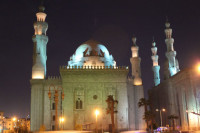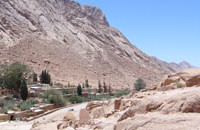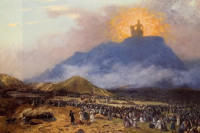Travel
The treasures of the Egyptian Museum in Cairo
One of the most fascinating museums in the world is the Egyptian Museum in Cairo. In 2012 it celebrated its 110th year since its opening in 1902 on Tahrir Square.
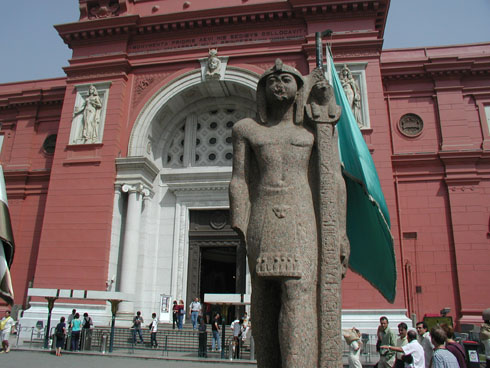
Front entrance of the Egyptian Museum in Cairo, Tahrir Square credit Veronique Gray
Construction started in 1897 after the first museum to collect Egyptian Antiquities in Cairo became too small. Despite the fact that the museum is not so large compared to other museums like the Louvre in Paris for instance, it still exhibits 120,000 pieces from the Old & New Kingdoms.
Everything shown to the public is on two floors. However the top floor is reserved almost only for the royal mummies and the galleries of King Tut.
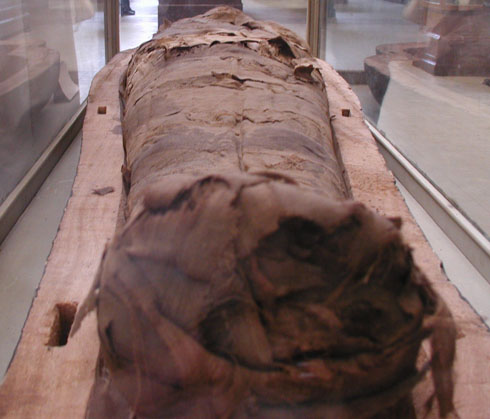
Royal mummy on the second floor of the Egyptian Museum in Cairo credit Veronique Gray
The best way to discover the museum is to book a guide. It will be useful to learn about the Kings, Gods and insight into the ancient Egyptian life and believes.
When you enter the museum, on the ground floor lays the replica of the Rosetta stone. The original can be seen in London at the British Museum. The British army defeated the French during the conquest of Egypt and had to leave the Rosetta stone to them. It holds the key to reading hieroglyphs. Discovered by the French J. Bouchard in 1799, it was only in 1822 that Jean-François Champollion understood how to read it.
In the entrance in the middle you can enjoy an interesting piece of Antiquity, the Namer Palette, a siltstone from the 31th century BC showing a battle between kings.
One also notices many statues, always portrayed slim, in ideal shape. A statue of Djoser from the Old kingdom with a fake beard caught my attention. It stands on a throne and has no cartouche.
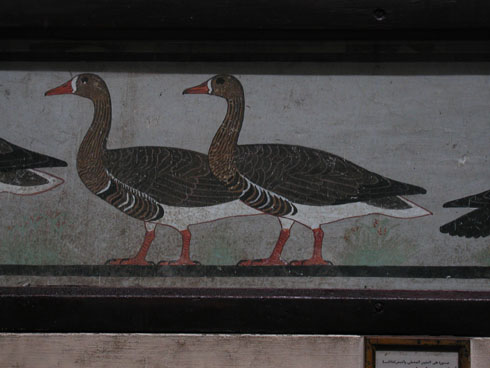
Geese wall painting at the Egyptian Museum in Cairo credit Veronique Gray
Our guide pointed out the statue number 31. It is the best statue in Egypt he said, made from durite, a very strong stone. It has a falcon at the top to guard the king.
There are very beautiful figurines from Sakkara, showing so many details and feelings of the workers.
And there is the amazing 5000 old geese wall painting. Painted in the 4th dynasty during the reign of Snefru, the colours of the three geese are holding up. It makes it to one of the most known pieces in the museum.
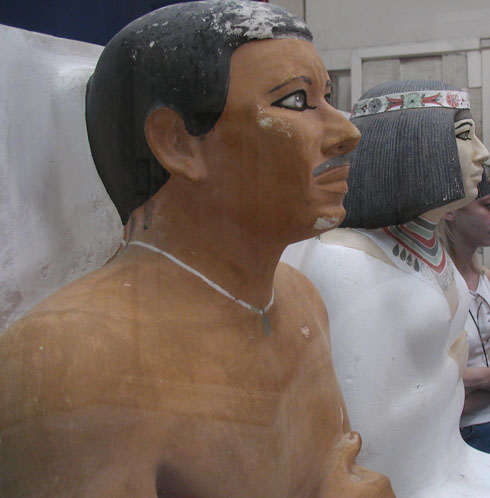
Statue of Prince Rahotep and Nofret at the Egyptian Museum in Cairo credit photo Veronique Gray
Most of the tour guides stop in front of the 4600 years old limestone statue of Prince Rahotep & Nofret. It was found in a mastaba in Meidum.
Most of your time probably will be spent on the first floor in the Tutankhamun corridor. Although King Tut only reigned for a decade from 1333 BC to 1323 BC, in the 18th dynasty, he remains the most popular of all pharaohs. It is said he was assassinated. It took numerous years of searching by archaeologist Howard Carter to find his tomb. Finally in 1922, Carter, who was about to abandon his work, found the tomb of Tut with many belongings to help in the afterlife. In the tomb were three cases and two sarcophagus.
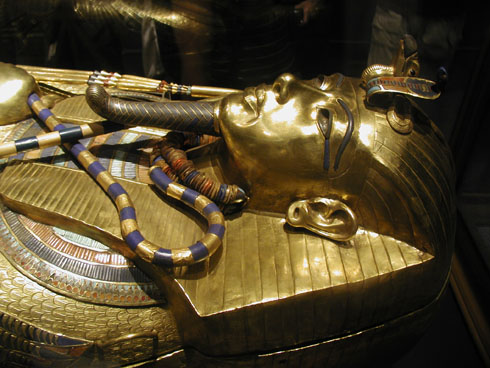
Top of sarcophagus from King Tut credit Veronique Gray
There was a lion throne, dressed with lions and cobras. On the top one sees the sun and at the bottom a plaque with the king’s enemies.
But the room with the most visitors and where the guides can’t enter is the room of King’s Tut mask and two sarcophagus. The gold mask weighs 24.5 pounds (11kg). It has some black to show the king is dead.
The mummy of King Tut is not in Cairo in the royal mummies room but in the Valley of the Kings in Luxor.
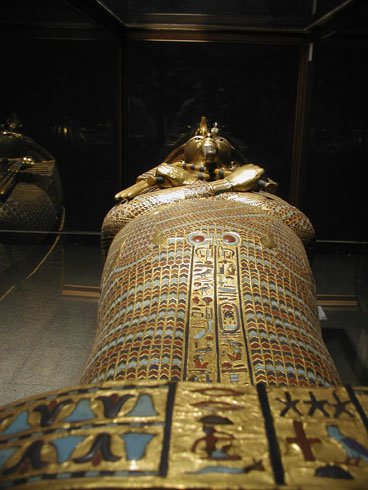
One of King Tut sarcophagus at the Egyptian Museum in Cairo credit photo Veronique Gray
The Egyptian Museum has many countless treasures and you will need more than one visit to see it all. Unfortunately on January 28th, 2011, during the Egyptian Revolution, people entered the museum and destroyed some artefacts and robbed the museum. Dr Hahi Hawass, director of Egyptian Antiquities and renowned archaeologist, said in his website that some have been recovered and other are being restored. Hopefully the missing pieces will be found one day.
The museum will be cleaned up when the Grand Egyptian Museum (GEM) opens next year just 2 km away from the Giza pyramids .The new museum will become the largest archaeological museum in the world.
The Collection of King Tut will be transferred to GEM. Starting next week from July 10th to Nov 1st a copy of Tutankhamun tomb and treasures will exhibited in Zurich at Halle 622 in Oerlikon. This exhibition has already been seen by more than six and a half million visitors in whole Europe. Tickets can be purchased at www.tut-ausstellung.ch

